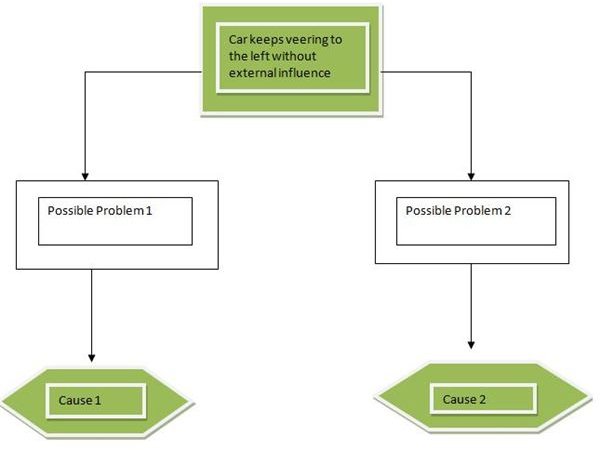Fault Tree Analysis in the Auto Industry: Methodology and How It Is Used
Oh No! So What Caused That to Happen?
Imagine for a moment, you’re standing with your coworkers, and you’ve loaded the crash test dummies into the new vehicle model. You’ve sent the car down the sample track when the car suddenly veers to the left. Upon further testing on different models, the same scenario repeats, no matter what the position of the steering column is. At this point, you may decide that it’s time to figure out what the problem is.
The fault tree analysis is a commonly used tool in automotive design, including safety related areas. This methodology uses logic diagrams to display the state of the system being considered and to document all of the potential faults in that system.
History of the Method’s Use
This analysis method has been around for about 50 years since the 1960s. H.A. Watson is credited with originally developing and using this method during his employment with Bell Laboratories. He collaborated with the Air Force in order to determine problems that were occurring. His work using this method of determining root causes sparked the interest of David Haasl, an employee of Boeing. Once Haasl picked up the fault tree analysis, Boeing worked quickly to develop software that would model this analysis form. The nuclear industry hopped on board to join the aerospace industry in employing this method to quickly solve problems that would lead to sometimes dangerous failures.
Since the early days of its inception, this risk management analysis tool has been picked up by a number of industries and companies including the chemical industry and NASA. It was also used during the Three Mile Island disaster to track down contributing factors to the plant meltdown. Most recently, the automotive industry has picked up the method and employed it in meeting increasing safety demands.
Creating Your Own Tree

Fault trees can be very time consuming to complete. However, the advantage of performing such an analysis is that it visually links potential faults and allows engineers to very quickly understand interdependencies between systems and faults within the system. Fault trees also have the advantage that they can be completed for a small portion of the system and then integrated to form a larger fault tree for the entire system if necessary.
The first step in creating a fault tree is to identify the root or the “top event” of the logic tree. To avoid confusion, there should be only one top event. If an additional event needs to be analyzed, then a separate fault tree should be developed. All other items in the fault tree should stem down from the single top event.
Every item that could cause the top event should be included in the tree. The items are linked together with a series of logic expressions. It is recommended that the conventional logic gate symbols are used to link the items in formal fault trees.
The most common fault tree blocks are AND and OR gates. These are used to understand the relationships between lower level events. For example, if either of two lower level events could cause the top event, then they will be connected with an OR gate. If, however, both events act together to create the top level event, then the lower level events will be connected with an AND gate.
Events can also be classified. The classifications used will be determined by the system that is being investigated. However, some of the common event classifications that are used are external events, internal events, and conditioning events.
Uses in Project Management
Fault trees allow engineers to develop an understanding of the system that is being investigated and help them identify potential root causes when an issue has been identified. They are particularly useful when there is more than one root cause for a failure, and it is difficult to understand the relationships between the root causes. Probability figures can be assigned to each event in the fault tree to help with understanding the risk associated with each item.
Once the fault tree is constructed, it is evaluated for potential improvement areas. Even if the exact root cause of a particular failure cannot be identified, the items that could have led to the fault can be investigated for improvement actions to help minimize the risk of the fault occurring again.
Although fault tree analysis is not as popular in the automotive industry as FMEA as a program management tool, fault trees can be a value asset for automotive engineers. Very simple fault trees can be completed to help engineers identify the root cause of an issue. They can be very useful when the complex events have occurred that have led to a failure of a system and can be very useful in improvement brainstorming sessions.
References:
Ericson, C. A. (1999) “Fault Tree Analysis - A History.” Precedings from The 17th International System Safety Conference. https://www.fault-tree.net/papers/ericson-fta-history.pdf
“Fault Tree Analysis Basics” https://www.weibull.com/basics/fault-tree/index.htm
Crashed car image courtesy of sxc.hu/gallery/jazz1111
Fault tree sample diagram courtesy of the author
